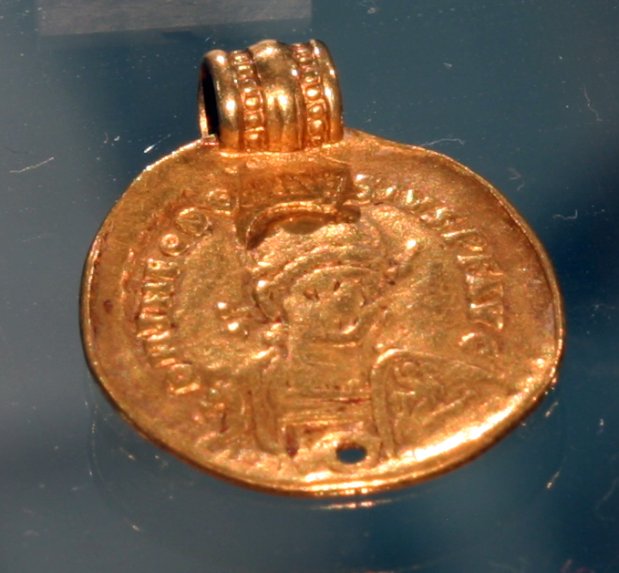
The Viking, by Tre Tryckare, copyright 1967, has some fun speculation on the volume of annual trade in a major Viking trading town in Sweden.
The large island of Gotland, off the eastern shore of Sweden, is about 1,229 square miles in size. It was a major trading center during the Viking age. Page 51 of the book says that of the 200,000 silver coins found in Scandinavia from the Viking Age, about half were on the island of Gotland. This includes, according to the text:
- 40,000 – Arabic
- 38,000 – German
- 21,000 – Anglo-Saxon
The text has some fun speculation on the possible amount of trade. Two critical assumptions, which are listed so you can revised them as you wish:
Out of 1,000 silver coins received in trade, an unknown number were buried for storage and 1 of those has been found. This wild guess assumes that there was 1,000 coins of income for each 1 coin found,
One Anglo-Saxon coin had purchasing power of 10 or 20 schillings. At the then exchange rates of 1967, this would be roughly comparable to somewhere around $3.00.
Before decimalization of British currency, there were 20 schillings to a pound. Today (10/17/17) one pound converts to US$1.32.
Here is the string of guesses:
- ~100,000 silver coins found in hoards
- 1 of 1,000 – coins received in trade which have been found
- 100,000,000 – guess on income over peak of trading history
- 150 years – heaviest trading time
- 1,000,000 – annual revenue in silver coins, assuming only 100 years
- $3,000,000 – trading income expressed in current purchasing power. I will guess that is a low number because the analysis does not reflect the far higher relative value of precious metals in the middle ages. See comments at end of this post.
I will guess those coins are probably somewhere in the range of an ounce a piece. That would give them a value way beyond $3.00.
Indications of weight for Anglo-Saxon and Viking coins
Anglo-Saxon and Viking Coin Weights, from the British Numismatic Society, provides some indications of the weights of coins. Some of these weights are for lead slugs which were used (if I’m understanding the article correctly) to weigh silver coins to see if they were full size, in other words a standard to measure bunch of coins you were going to receive in a transaction.
Article goes way beyond my understanding, but it gives me some hints, and that is what I look for as I learn.
Here are a few of the weights of found coins.
Anglo-Saxon coins:
- 163.1 g – from Alfred, king of Wessex (871 – 899) – this is either one half of the Roman pound which would be 163.5 g or it may be half of a monetary pound which would be between 162 and 167 g grams
- 37.66 g – from Edward the Confessor, king of England (1042 – 1066)
- 32.89 g – also Edward the confessor
Those weights point toward one ounce for a coin, with 12 to a pound.
Viking coins:
- 17.54 g
- 18.15 g – possibly from Eanred, king of Northumbria; was found in a Viking grave; guess is the deteriorated piece may have been 1 ounce originally
- 12.45 g – possibly from Eanred; found in same grave as previous item; guess is this deteriorated piece may have been one half ounce originally
I don’t understand the weights on the Viking coins. There was a completely different sizing system used for the coins minted under Viking control in England.
Other possible values of silver coins
I’ll guess those coins referred to are more likely to be mostly in the range of around an ounce per coin. On the other hand, to make change, silver coins were cut into pieces, so many of the coins are probably cut fractions of a whole coin.
For context, we can look to Iceland, where price of a dairy cow was somewhere in the range of two ounces of silver and you might get 3 sheep for one ounce.
That would put the relative value of a silver coin far above the value of a modern 20 British schillings. The revised relationship might be closer to 50:1 or 100:1 than the implied 1:1 in the analysis above.
That would suggest the volume of annual trade in Godland, instead of $3M a year, might be $150M or even $300M annually. Perhaps even higher.